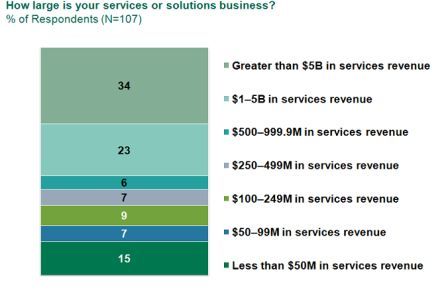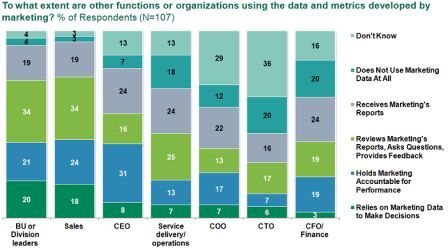Survey Shows Data-Driven Marketing Improves Sales Productivity and Market Share…Yes!
What Does It Take to Become Data Savvy?
Measuring marketing’s impact on the business has been near the top of the CMO agenda for some time. Often the purpose is to prove marketing’s value, essentially looking back on accomplishments rather than forward to what can be. Today good marketing is wrapped in experimentation – finding ways to improve results. In this environment one would expect that we could finally show how marketing achieves business impact. That was the hypothesis behind the Patricia Seybold Group/ITSMA survey on data-driven marketing. Read how data-driven marketing improves business results and gain insight into what it takes to move marketing to be data-driven.
NETTING IT OUT
Starting with the hypothesis that data-driven marketing yields business performance improvements, Patricia Seybold Group and the Information Technology Services Marketing Association (ITSMA) surveyed their members and subscribers. The results showed that a small number of data savvy marketing organizations significantly improved sales productivity and market share over a two-year period when compared with other organizations in the survey.
The survey further shed light on the factors that enable a company to become data savvy. First among these is leadership, with clear objectives and success measures. Data governance and technology plans and investments closely follow leadership. We also found that clearly documented, formal procedures and a dedicated analytics group are critical to success. Finally, we concluded that organizational outreach plays a key role in enabling the organization to reap the benefits of improved marketing data.
WHY A SURVEY ON DATA-DRIVEN MARKETING?
More Data, More Uses
There is no question that today’s technology and customer use of the web has exponentially increased the amount of data available to marketers about marketing programs, customers, prospects, competition, and markets. Many of marketing’s activities, from evaluating customer satisfaction to presenting the right offer at the right time and proactively managing brand in a social media world have become highly dependent on effective analysis of data.
In light of marketing’s growing dependence on data, the Patricia Seybold Group and ITSMA undertook to find out:
- How proficient marketers are in the collection, analysis, and use of data for decision making
- Whether effective use of data yields performance improvements
- What steps marketing organizations take to become proficient in collection, analysis, and use of data for decision making
Our hypothesis was that data-driven marketing yields business performance improvements.
Survey Design and Implementation
In March 2011, Patricia Seybold Group and ITSMA invited their members and subscribers to participate in an online web-based survey, asking that the survey questions be answered by a person in the organization who manages one or more marketing functions. 107 representatives from 71 companies responded to the survey. We conducted 30-minute follow-up telephone interviews with 17 respondents.
Respondents included marketers from professional services firms, software solutions providers, computer systems and solutions providers, network systems and solution providers, and telecommunications services providers. Half the respondents were from companies that primarily sell services (i.e., less than 10 percent of revenue from products), and the other half were from companies that sell products and services. All sell business to business; just under 15 percent also sell business to consumers. As shown in Illustration 1, over half of the respondents have over $1 billion in services revenue.
Survey Respondents by Size of Services or Solutions Business
© 2011 Patricia Seybold Group and ITSMA
Illustration 1. Over half the respondents reported over $1 billion in services revenue.
ATTITUDES TOWARD AND RELIANCE ON MARKETING DATA
Marketers Love It but Don’t Use It
B2B services marketers overwhelming (72 percent) recognize data-driven marketing as very important or important. No one said it is “not at all important.” Moreover, nearly 60 percent reported that their organizations embrace the “test and learn” approach that underpins effective use of data in marketing. Yet almost half (48 percent) considered their use of marketing data as average 1, and only 11 percent considered themselves leading-edge 2.
Few Non-Marketing Executives Rely on Marketing Data to Make Decisions
Most disturbing, only a handful of non-marketing senior executives rely on marketing data to make decisions, as shown in Illustration 2. As you might expect, business-unit and sales executives used marketing data the most to make decisions. Mostly, though, marketing data reports are reviewed with no action taken.
Note also that more than 15 percent of marketers don’t know how marketing data is used by the COO, CTO. and CFO. These kinds of silos are not good for the business and hurt marketing’s credibility. Perhaps marketing should do a little market research on how the rest of the organization uses or wants to use marketing data.
Non-Marketing Executives Reliance on Marketing Data
© 2011 Patricia Seybold Group and ITSMA
Illustration 2. Very few non-marketing executives rely on marketing data to make decisions. Moreover, more than 15 percent of marketers don’t know how the COO, CTO, and CFO use marketing data.
Defining Characteristics of Data Savvy Marketing Organizations
We identified 23 organizations that we termed “data savvy.” These organizations were the only ones that shared three important characteristics ...
***ENDNOTES***
1) Average defined as: we regularly collect and report data, providing organized information in reports or dashboards to show the impact of marketing.
2) Leading edge defined as: we use data analysis to make both tactical and strategic decisions, such as estimating the impact of marketing investments on revenue. We also use data analysis to make tactical decisions that improve the impact of marketing such as optimizing landing pages. We also regularly collect and report data, providing organized information in reports or dashboards to show the impact of marketing.
***ENDNOTES***
Sign in to download the full article
0 comments
Be the first one to comment.







